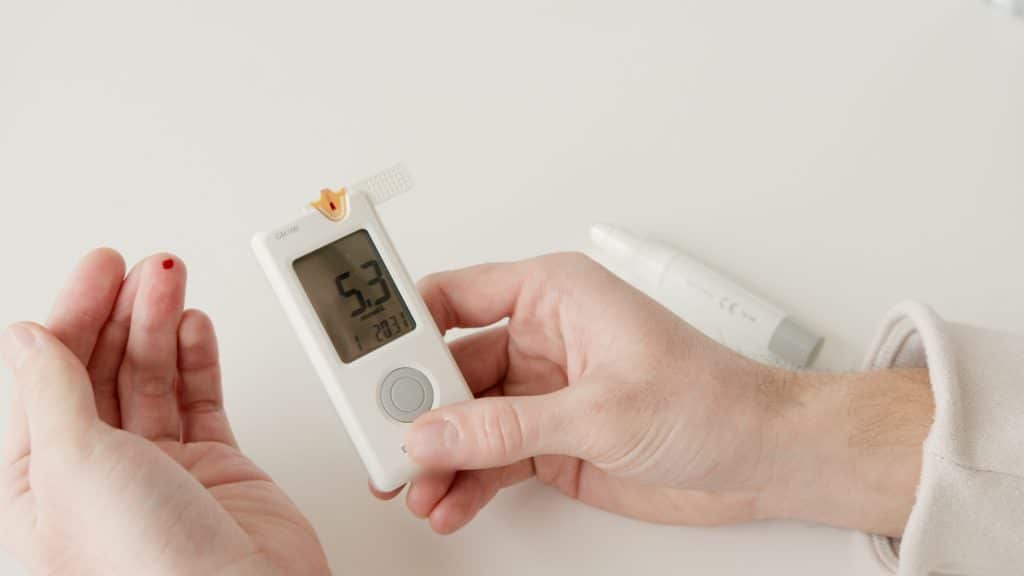
INTRO
What is Fiber?

Fiber is an important nutrient that plays a crucial role in maintaining a healthy diet and digestion. It’s found in fruits, vegetables, whole grains, and legumes, and can help regulate digestion and bowel movements, lower cholesterol levels, and control blood sugar levels.
Fiber can also help with weight management by keeping you feeling full and satisfied and has been shown to reduce the risk of certain diseases such as heart disease, diabetes, and some types of cancer.
Increase your fiber intake today by starting a fiber challenge with some friends. Keep each other accountable and motivated to stick to this habit!
Benefits of Fiber
Fiber has a lot of health benefits that help in many areas of the body, some of these benefits include:
Regulates digestion and bowel movements
Fiber helps to absorb water in the digestive system and move food through the intestines more smoothly, reducing constipation.
Lowers cholesterol levels
Fiber binds with cholesterol in the digestive system, reducing the amount that is absorbed into the bloodstream.
Weight management
Fiber-rich foods can help to keep you feeling full and satisfied, which can help with weight management.
Improved gut health
Eating more fiber can benefit the gut microbiome, which can help improve overall health.
Helps to reduce inflammation
Studies have found that people who eat more dietary fiber have lower levels of inflammation, a factor that is associated with many chronic diseases.
Boosts immune system
Eating foods high in fiber may increase the production of antibodies and white blood cells, which can help to boost the immune system.
Filling up on Fiber

The best way to fill up on fiber is to consume a variety of high-fiber foods as part of a balanced diet. Some examples of high-fiber foods include:
Fruits such as berries, pears, and apples
Vegetables such as broccoli, spinach, and carrots
Whole grains such as quinoa, oats, and whole-wheat bread
Legumes such as lentils, beans, and
Nuts and seeds such as almonds, chia seeds, and flaxseeds
Eating a variety of fiber-rich foods can help ensure that you get all the different types of fiber your body needs. When increasing your fiber intake, it’s recommended to do it gradually, so your body can adjust. Additionally, it’s important to drink enough water to avoid discomfort, such as gas, bloating, and constipation.

In addition to eating high-fiber foods, some people may choose to take a fiber supplement. These supplements come in powder, capsule or tablet form and can be added to food or drinks. However, it is always best to check with your healthcare provider before adding a supplement to your diet.
How to Eat More Fiber
There are a variety of foods that contain healthy dietary fiber, making it easy to mix things up and increase your fiber intake during your fiber challenge. Some of the best sources include…
Eating more fruits and vegetables
Fruits and vegetables are excellent sources of fiber, so make sure to include a variety in your diet. Try to aim for at least 5 servings of fruits and vegetables per day.
Eating legumes
Legumes such as lentils, beans, and chickpeas are packed with fiber. Incorporating them in meals or adding them to salads is a great idea.
Starting the day with a high-fiber breakfast
Eating a breakfast that is high in fiber will set the tone for the rest of the day. A high-fiber cereal with fruits, yogurt, or oatmeal is a great choice.
Making smart choices at restaurants
When eating out, opt for meals that include fruits, vegetables, whole grains, and legumes.
Choosing whole grains
Whole grains such as quinoa, oats, brown rice, and whole-wheat bread are great sources of fiber. Switch out white flour products for whole grain alternatives.
Adding nuts and seeds
Nuts and seeds like almonds, chia seeds, and flaxseeds are good sources of fiber. Add a handful to yogurt, oatmeal, or a salad.
Fiber supplements
Fiber supplements such as psyllium, inulin, and methylcellulose can be added to food or drinks to increase your fiber intake. However, you should always check with your healthcare provider before taking any supplement.
It’s also important to remember that a high-fiber diet may cause gas, bloating, and constipation if not enough water is consumed. Drinking plenty of water will help to avoid any discomfort and help move the fiber through the gut.
How to Start a Fiber Challenge
Building a habit of consuming or supplementing with fiber requires a little bit of planning and consistency. Follow these steps for best results.
1
Start slowly
If you’re not used to consuming a lot of fiber, it’s best to start slowly to give your body time to adjust. Gradually increase your fiber intake over a few weeks to avoid discomfort.
2
Make a plan
Make a plan of what high-fiber foods you will consume during the day, and include them in your shopping list. Also, make sure to keep some high-fiber snacks on hand for when you’re on the go.
3
Incorporate fiber into meals
Incorporate fiber-rich foods into your meals and snacks. For example, adding berries to your cereal or including a side of steamed vegetables with your lunch.
4
Take a supplement
If you find it difficult to get enough fiber from your diet, consider taking a fiber supplement. Always check with your healthcare provider before taking any supplement.
5
Track your progress
Keep track of your fiber intake and make note of how you feel. You can use a journal or an app to help you keep track of your progress.
6
Make it a habit
Make it a habit to eat high-fiber foods or supplement your diet with fiber. Incorporating fiber into your daily routine will make it easier to stick with it.
7
Be consistent
Consistency is key when building a habit. Make sure to consume or supplement with fiber every day and be consistent with your routine.
Remember, it may take some time to see the benefits of consuming or supplementing with fiber. However, sticking with it and making it a part of your daily routine will bring a lot of health benefits in the long run.
Fiber Challenge Setbacks

Consuming more fiber can come with some challenges, especially if you’ve been eating a low-fiber diet for a long time. With a little bit of planning and persistence, you can overcome the most common setbacks and make a high-fiber diet a sustainable habit.
Discomfort. One of the most common setbacks when increasing your fiber intake is discomfort, such as gas, bloating, and constipation. To avoid this, it’s important to drink enough water and start increasing your fiber intake gradually.
Time constraints. Finding the time to prepare high-fiber meals can be challenging. Try to plan ahead and prepare meals in advance, or keep high-fiber snacks on hand for when you’re on the go.

Cost. Some high-fiber foods such as fruits, vegetables, and whole grains can be more expensive than other options. Look for deals and sales at the grocery store, and buy in bulk when possible.
Lack of variety. Eating the same high-fiber foods can be boring. Try to mix things up by trying new recipes, experimenting with different spices, and incorporating a variety of fruits, vegetables, whole grains, legumes, nuts, and seeds.
Unfamiliarity. Some people may not be familiar with how to prepare high-fiber foods or may not be aware of the fiber content of different foods. Try to learn more about high-fiber foods, and ask for help from a nutritionist or dietitian.
Fiber FAQ’s
While fiber is generally considered beneficial for health, consuming too much fiber can have some negative side effects. Consuming excessive amounts of fiber can lead to bloating, gas, abdominal discomfort, and diarrhea. This is because fiber absorbs water and bulks up stool, which can create pressure on the intestines and cause digestive problems.
Additionally, consuming large amounts of fiber without enough water intake can lead to constipation, as the fiber can absorb water from the digestive tract and make the stool hard and difficult to pass.
It’s important to gradually increase fiber intake and drink plenty of water to avoid these negative side effects. It’s also important to consult with a healthcare provider if you have a history of gastrointestinal problems or if you experience persistent digestive symptoms after increasing your fiber intake.
The recommended daily intake of fiber varies depending on age, gender, and other factors. However, the general recommendation for adults is to consume 25 to 30 grams of fiber per day.
However, some individuals may require more or less fiber depending on their individual needs. For example, athletes and individuals with higher calorie needs may require more fiber to support their energy levels and digestive health. People with certain health conditions, such as inflammatory bowel disease or irritable bowel syndrome, may require less fiber to avoid aggravating their symptoms.
It is important to speak with a healthcare provider to determine your individual daily fiber needs and to develop a dietary plan that supports your overall health and well-being.
There are two main types of fiber: soluble fiber and insoluble fiber.
Soluble fiber dissolves in water and forms a gel-like substance in the digestive tract. It’s found in foods such as oats, barley, beans, lentils, fruits, and vegetables. Soluble fiber can help to reduce cholesterol levels, regulate blood sugar, and promote feelings of fullness.
Insoluble fiber does not dissolve in water and adds bulk to the stool. It can be found in foods such as whole grains, nuts, seeds, and vegetables. Insoluble fiber can help to promote regular bowel movements and prevent constipation.
It’s important to note that most plant-based foods contain both soluble and insoluble fiber, although the amount of each type may vary depending on the food. Consuming a variety of high-fiber foods can help to ensure that you are getting both types of fiber in your diet.
Supporting Your Fiber Challenge
Smartphone app. There are several apps available, like the MasterHealth app, that can help you track your fiber intake, set reminders, and give you tips and recipes for high-fiber meals.
Fiber supplements. Fiber supplements such as psyllium, inulin, and methylcellulose can be taken in powder, capsule, or tablet form and can be added to food or drinks to increase your fiber intake.
Fiber-rich products. There are many products on the market specifically formulated to provide additional fiber, such as fiber-rich cereals and breads.
Social media platforms. There are many health and wellness communities online, like the MasterHealth community and social media accounts, that focus on high-fiber eating.
Community support. Getting support from your friends and family can help you stick to your goals. Invite the people in your life to join your fiber challenge and keep each other motivated!











